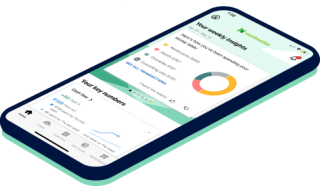Attention-Deficit Hyperactivity Disorder (ADHD) may qualify you for Social Security Disability Insurance (SSDI) if you meet the Social Security Administration’s (SSA) definition of disability. However, the SSA has not published specific criteria for disability benefits for ADHD. Instead, you must prove that your condition meets the general eligibility requirements.
Why is ADHD considered a disorder?
The SSA classifies ADHD as a mental health disorder. To be considered a disability, a mental health disorder must severely limit an individual.[0]:
Mental ability in at least one of four main areas: processing information, interacting with others, concentration, and self-control.
The SSA does not provide a mathematical way to measure a person’s physical and mental abilities in light of an ADHD diagnosis, instead stating that a person must experience “significant limitations,” which falls somewhere between moderate and severe limitations.
If you meet the following criteria and can prove that your disability is due to ADHD, you may be eligible for SSDI:[0].
Physical limitations
The SSA tests whether the condition consistently affects your ability to initiate, maintain, or complete physical tasks independently at work. The SSA defines physical activity as any activity that requires motor skills, such as getting up from a chair, using your arms to grasp or lift objects, maintaining balance while standing or walking, and even bodily functions such as swallowing.
Mental limitations
The SSA will assess the extent to which you are limited in your ability to work independently while maintaining the appropriate professional responsibilities for your workplace, and will also consider how well you are able to maintain that level of work.
The four areas of mental functioning that the SSA assesses for SSDI are:
To understand, retain, or apply information.
To focus, sustain, or maintain pace.
To adapt or manage oneself.
Examples of how ADHD can affect mental function include:[0]:
Complete tasks that require multiple steps to be completed in sequence.
Maintaining pace to complete tasks on time.
Stay focused on your work without distractions.
Symptoms continue
The SSA requires that your medical records document that you have had ADHD for at least two years.[0]You may need to prove that you continued to receive treatment during that time.[0].
Continuing treatment
The SSA also requires proof that you have tried treatment for ADHD without significant success or that you are relying on additional support. You must show that you gave the treatment a chance to work.
SSDI provides disabled workers with monthly payments to replace the income they can no longer earn.[0]The amount the SSA pays to people with disabilities depends on how much of their lifetime income is covered by Social Security and whether they receive other government benefits or pensions.[0].
The SSA paid an average of $1,485.87 to workers with disabilities in 2023, which equates to $17,830.44 per year.[0]While this monthly income would help many workers with disabilities, the average amount is only $3,250.44 per year more than the 2023 federal poverty level.[0].
NerdWallet App for More Financial Transparency
Track your budget and see all your financials in one place.

Learn more about how to spend your money wisely – delivered straight to your inbox
When you sign up, we’ll send you expert articles on the money topics that matter to you most, plus other ways to make your money go further.

ADA Accommodations for ADHD
The Americans with Disabilities Act (ADA) requires employers with 15 or more employees to make reasonable modifications to job requirements, the workplace, or hiring processes to accommodate employees with disabilities.[0]The ADA covers people with ADHD who meet the law’s definition of a disability.[0].
Examples of workplace accommodations for ADHD include:
A modifiable workspace for changing positions.
You will have more time to complete your tasks.
A quiet space where you can concentrate.
A distraction-free workspace.
You don’t have to get an ADA accommodation to apply for SSDI benefits, but it’s a good place to start. If your employer asks for documentation, a letter from your doctor is usually sufficient.[0].
Why is ADHD difficult to diagnose?
When it comes to ADHD, “there’s a spectrum of symptoms,” says Howard Pratt, medical director of psychiatric services at South Florida Community Health.
Not everyone experiences ADHD in the same way, which is part of what makes the condition difficult to diagnose.
“There’s no biological test,” says Zoe Martinez, lead psychiatrist at Done, a telehealth company that specializes in ADHD treatment. “It’s really a clinical diagnosis.”
Doctors can’t confirm ADHD with a simple test, so they must consider what symptoms a patient exhibits and how they affect their life. Psychiatrists must turn to additional sources of information to confirm a diagnosis, says Pratt. They might look at records like job evaluations and report cards to get a better understanding of how hard a patient struggles with certain tasks.
“The key is to rule out other causes,” Pratt says. “When it comes to diagnosis, it’s very difficult.”
Inattention is a permanent feature of ADHD. “You don’t grow out of it,” Martinez says. Adults with ADHD also tend to have trouble focusing on tasks, completing activities, and ignoring distractions.
These symptoms can make work feel unmanageable, and Martinez says that patients’ symptoms often worsen when they take on more responsibilities at work — managing others, juggling more tasks, or attending more meetings can make it harder to function well at work.
To your boss, this may seem like “you’re not paying attention or you don’t care,” Martinez says, “but that’s not true. The task is just too hard.”
Children can show the same symptoms, but they also tend to exhibit more impulsive behaviors, such as difficulty taking turns or waiting for others to finish a task, Martinez said. These symptoms can cause problems in school, just as they affect adults in the workplace.
Learn more about whether these conditions qualify for disability benefits here.

